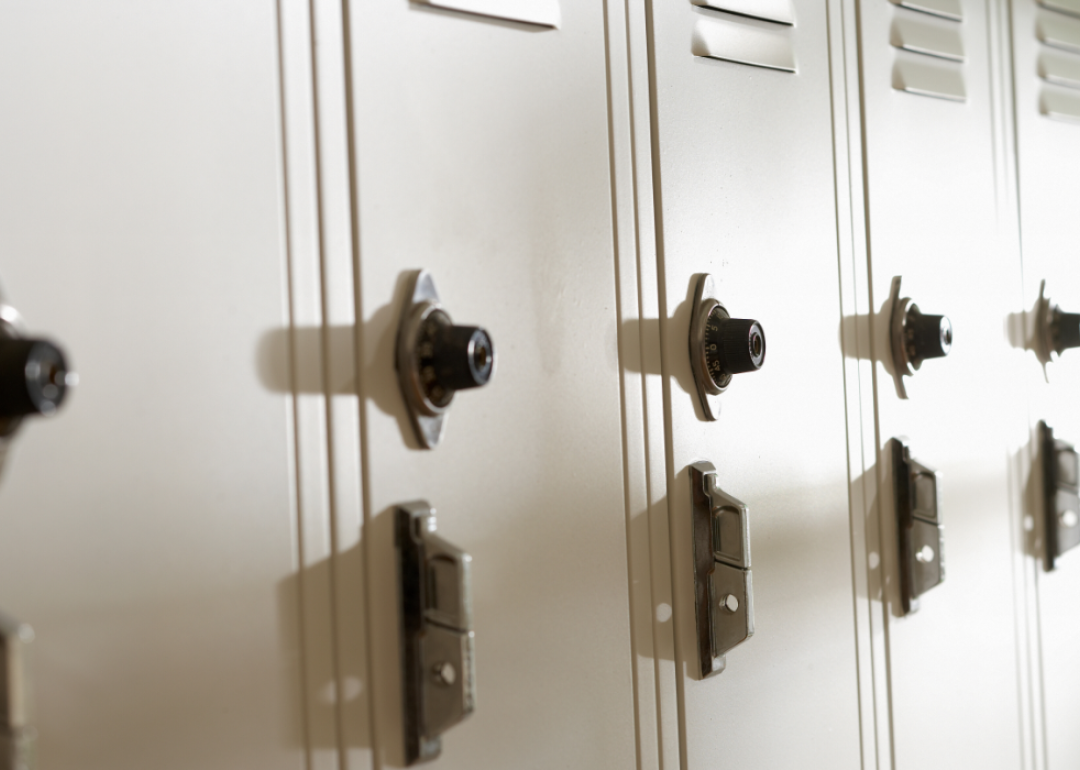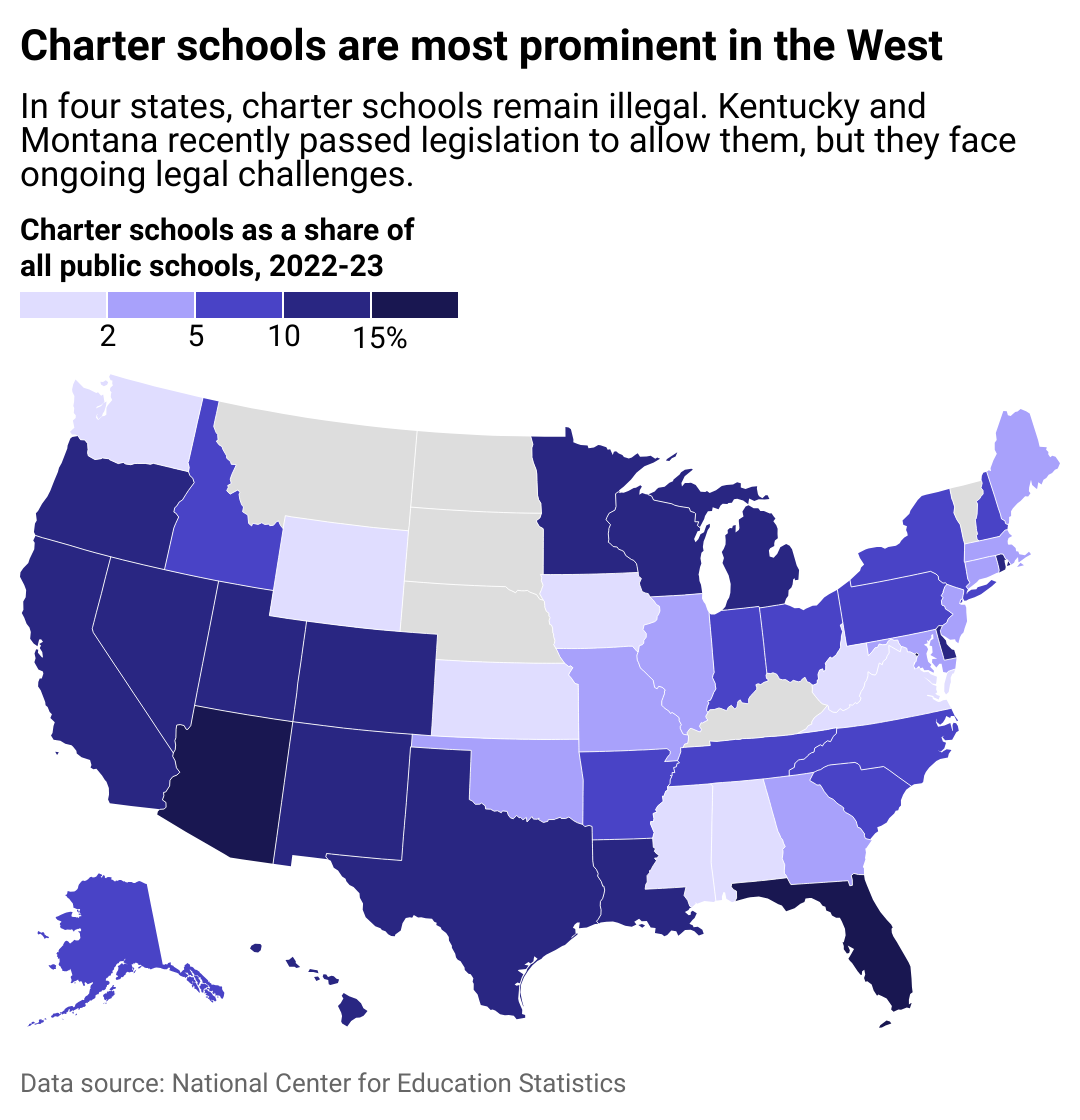
While policies vary dramatically across the US, charter schools are most prevalent in these states
This story originally appeared on Study.com and was produced and distributed in partnership with Stacker Studio.
While policies vary dramatically across the US, charter schools are most prevalent in these states
Charter schools are officially 30-something and entering full adulthood, complete with a record of success and skepticism.
The first charter school law was passed in 1991 in Minnesota. The concept of the "charter school" dates back to at least the 1970s, when New England educator Ray Budde proposed a model where groups of teachers could establish contracts or "charters" with local school boards to explore new ideas and approaches in education. Grounded in progressive ideals—although charter schools are often championed by conservative school choice advocates now—this concept aimed to empower educators with greater autonomy, believing it would increase student success rates.
Over the last 30-plus years, public charter schools have ballooned to 8,000 schools and campuses, where they educate 3.7 million students, or 7.4% of all public school enrollees. The results of America's charter school experiment are a mixed bag.
Study.com used data from the National Center for Education Statistics to analyze the prominence of charter schools nationwide.
One appeal of charter schools for parents is the opportunity for more excellent choices in their child's education. Charter schools provide an alternative in districts where traditional public schools may be underperforming or where a student's neighborhood limits their options.
In addition, charter schools often have specialized curricula or educational approaches tailored to specific student needs or interests, such as STEM-focused programs, arts integration, or language immersion.
However, charter schools also face significant controversies, the most obvious being that these education centers are privately managed but utilize public funding. Critics argue that this diverts resources away from traditional public schools, exacerbating inequalities in education funding. One study released in 2017 by the educational firm Research for Action found that charter schools create a net fiscal loss in Pennsylvania schools.
Writing for The Washington Post in 2013, former Howard University School of Education Dean Leslie T. Fenwick argued that terms such as "school reform," when applied to charter schools, are simply a codeword for land grabs for venture capitalists. "More often than not, new schools are placed in upper-income, gentrifying white areas of town, while more schools are closed and fewer new schools are opened in lower-income, Black areas, thus increasing the level of educational inequity."
The autonomy granted to charter schools can lead to issues with transparency and accountability, as they may be subject to different regulations and oversight than traditional public schools. One 2015 study found $200 million worth of financial abuse in the schools.
Charter schools can also be more racially isolated than traditional public schools, with some studies showing greater segregation along racial and socioeconomic lines. Efforts to address this issue include improving recruitment efforts in communities of color and promoting "diverse-by-design" charter schools that proactively enroll students from various backgrounds.
In addition, teacher turnover is a concern due to lower salaries and a lack of job security. Florida charter schools lost about 10% of their teachers per year between the 2011-2012 and 2014-15 school years, according to a University of Florida study. The public teacher turnover rate was roughly 4% during that period.
One 2023 study indicated that charter schools achieved superior student outcomes compared to traditional public schools between 2015 and 2019. Yet, educational experts expressed concerns about the study, saying that some of the data was misinterpreted and inconsequential.

4 states won't allow charters, while the highest prominence is out West
Charter schools, conceived as innovative alternatives to traditional public schools, are the subject of intense debates regarding their impact on education systems.
Washington D.C. leads the way in charter school prominence, with more than half of its public schools being charter, followed by Arizona with 23.7%. The prevalence drops significantly in other states: No other state surpasses 20%. Other top states include Florida (17.5%), Colorado (13.9%), and Nevada (13.5%). While the schools essentially exist nationwide, they are not operational in four states: Nebraska, North Dakota, South Dakota, and Vermont.
In Kentucky and Montana, charter schools are permitted but are grappling with significant legal hurdles, underscoring the challenges they face.
A Kentucky judge in December 2023 declared a state law permitting public funding for charter schools unconstitutional, saying it would create a separate and unequal school system. So, while charter schools are allowed in the Bluegrass State, they cannot use public tax dollars.
Last year, Montana approved charter schools for the first time. However, public school advocates are concerned about a potential "community choice" charter school system that would allow them to operate independently of public schools. In addition, disability rights activists worry that funding for special needs students will be taken from school districts and turned over to charter schools.
Story editing by Nicole Caldwell. Copy editing by Tim Bruns.



